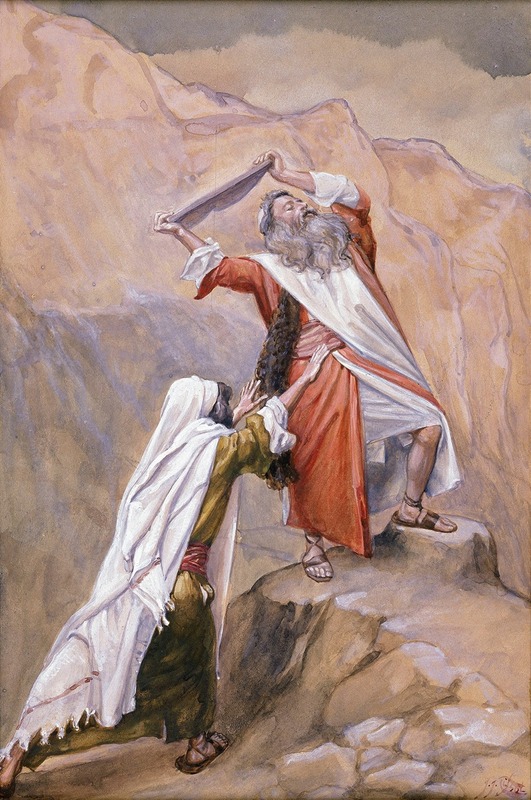
Moses Destroyeth the Tables of the Ten Commandments
A hand-painted replica of James Tissot’s masterpiece Moses Destroyeth the Tables of the Ten Commandments, meticulously crafted by professional artists to capture the true essence of the original. Each piece is created with museum-quality canvas and rare mineral pigments, carefully painted by experienced artists with delicate brushstrokes and rich, layered colors to perfectly recreate the texture of the original artwork. Unlike machine-printed reproductions, this hand-painted version brings the painting to life, infused with the artist’s emotions and skill in every stroke. Whether for personal collection or home decoration, it instantly elevates the artistic atmosphere of any space.
James Tissot's painting Moses Destroyeth the Tables of the Ten Commandments is a work that depicts the biblical episode in which Moses, upon descending from Mount Sinai and witnessing the Israelites worshiping the Golden Calf, shatters the stone tablets inscribed with the Ten Commandments. This dramatic moment is described in the Book of Exodus in the Hebrew Bible (Exodus 32:19). The painting is part of Tissot's extensive series of watercolors illustrating scenes from the Bible, collectively known as The Life of Moses or The Old Testament series.
James Tissot (1836–1902) was a French painter and illustrator known for his detailed and evocative works. In the later part of his career, Tissot turned his focus to religious themes, producing a monumental series of biblical illustrations. These works were the result of extensive research, including multiple trips to the Middle East, where Tissot sought to study the landscapes, architecture, and cultural details to bring authenticity to his depictions of biblical events.
Moses Destroyeth the Tables of the Ten Commandments is executed in watercolor, a medium Tissot frequently employed for his biblical series. The painting captures the intense emotion and drama of the moment, with Moses portrayed in a dynamic pose as he prepares to break the tablets. The composition emphasizes the chaos and idolatry of the Israelites in the background, contrasting with Moses' righteous anger. Tissot's attention to detail is evident in the clothing, gestures, and expressions of the figures, as well as in the depiction of the tablets themselves.
This painting, along with the rest of Tissot's biblical series, is housed in the collection of the Brooklyn Museum in New York. The museum acquired the series in 1900, shortly before Tissot's death. The works have been praised for their meticulous craftsmanship and their ability to bring biblical stories to life, though they have also been critiqued for their reliance on a 19th-century European perspective in depicting ancient Middle Eastern settings.
Tissot's biblical illustrations, including Moses Destroyeth the Tables of the Ten Commandments, remain significant for their artistic and historical value. They reflect the intersection of art, religion, and scholarship in the late 19th century and continue to be studied and appreciated for their contribution to the visual interpretation of biblical narratives.











